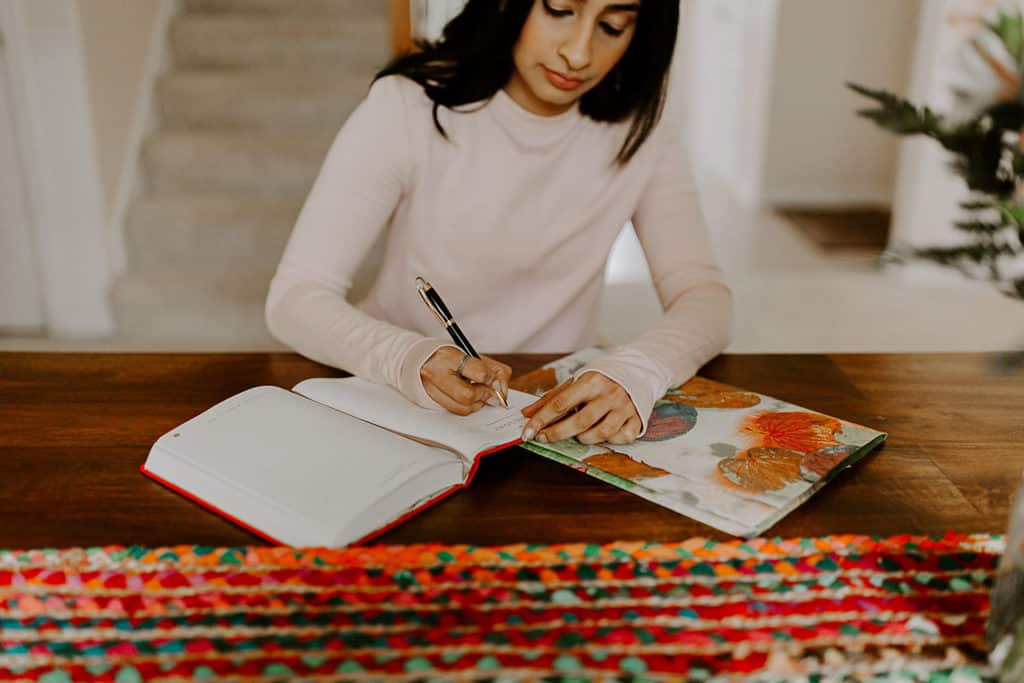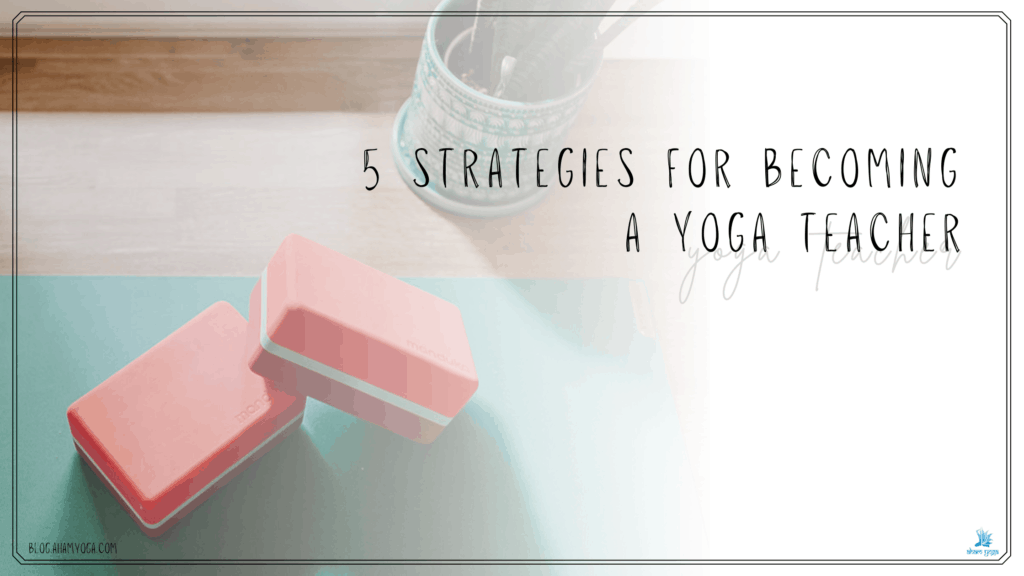Enrolling in yoga teacher training was hands down one of the best decisions of my life—the other two were marrying my best friend and getting a dog!—but you may be confused about how or even where to start. Don’t worry, you’re not alone; in fact, I was in your shoes not too long ago. After teaching for almost a decade, I’ve successfully grown dedicated yoga students—just like you—into successful, confident yoga teachers. Now I’m going to help you succeed in crossing over from yoga student to yoga teacher-in-training.
Keep reading to learn more about each of the five strategies for becoming a successful yoga teacher, as well as three short checklists to focus your exploration and guide your next steps:
- Grow your asana practice
- Attend different levels of practice
- Build up your non-asana habits
- Understand how yoga teacher training works
- Be clear about your goals
1. Grow your asana practice
In order to become a successful yoga teacher, you first need to be a good yoga student. In fact, great yoga students make the best yoga teachers. To start with, begin working on your asana practice. I bet you’ve heard the word “asana” in your yoga classes: It’s a Sanskrit word meaning “pose” or “posture” that we use to refer to the physical practice of yoga.
Start working on building your own practice: The more you do this, the easier it will be when you start your yoga teacher training. You will be in a better position to absorb what’s taught in training and eventually this will impact what you teach.
Make sure that as a student you have done a decent amount of vinyasa (“movement” or “flow;” this is when you continually and rhythmically move from pose to pose, each linked by breath), hatha (in modern-day yoga classes, this refers to the quality of holding poses for a longer duration), and restoration (long holds in deeply relaxing poses; the emphasis is not on being active but letting the body and nervous system completely rest and release). You may prefer one type over the other—and that’s okay.
2. Attend different levels of practice
If you want to be a successful yoga teacher, you must also grow your understanding of asana practice; when you decide to become a yoga teacher, it’s not only about your own physical practice. In fact, what matters is how you understand asana as it relates to other people’s bodies. This journey is filled with exploration of the physical practice and it begins with your body and your poses. Make sure you attend both basic and more advanced classes irrespective of what your own threshold is. Doing so will give you a glimpse of what you will be required to teach in the years ahead and it can be great inspiration for your own practice. You will gain valuable insights when you shift your mindset from that of a student to that of a teacher.
Checklist for practice:
- Attend a beginners’ yoga class
- Attend an advanced yoga class (if possible; do whatever you can safely)
- Attend a restorative yoga class
- Attend classes teaching a few different styles of yoga, when possible
- Learn to use props to support as well as enhance your yoga practice

3. Build up your non-asana habits
Being a great yoga teacher means you have to do things that are not only about yoga poses. You’ll need to indulge in a decent amount of learning theory. This could range from learning about yoga poses (the easiest topic to relate to) to more complex aspects of yoga history and philosophy. The best yoga teachers start early and dive in eagerly when theory comes up.
Checklist for practice:
- Listen regularly to yoga podcasts
- Read two yoga blog posts per week. Check out my blog here.
- Listen to a yoga audiobook
- Read a short yoga book
- Join a virtual yoga book club if you find it hard to stay motivated with reading independently. Check mine out here.
Finish the book, blog or podcast—learn to not quit when things get hard. Break the task into smaller bits and choose how you consume content to make it work for you.
4. Understand how yoga teacher training works
Yoga teacher trainings are longer than most other fitness or wellness trainings out there. Why? Because yoga is multidimensional. It’s not just a workout, it’s a way of life (but more on that another time). The scope of yoga is immense and as a result, yoga teacher trainings need to be long enough to at least give you a solid grasp on the basics. Typically, you’ll find three types of trainings on offer…
- Weekends only. These are by far the most popular and seem to work best with our modern lifestyles. These typically last anywhere from 8 to 12 weeks. At my studio I offer courses lasting 12 weekends.
PROS: Allows time and space between weekends to absorb content, practice skills, and get better at yoga-ing. Can usually participate without taking time off work. Easily available.
CONS: Our weekday lives are already so full, we often don’t take the time to study between weekend trainings. By Saturday we can be tired from the long work week. Weekend training days are long to fit in all the content.
- Intensives. These are monthlong formats where you work full days from Monday to Saturday, which typically works best in a residency program. I’ve trained this way a few times. These are not easily available as yoga studios need to run regular classes during the week.
PROS: It can help you absorb more when you immerse yourself in yoga.
CONS: Doesn’t allow time for slow, deep reflection and ongoing practice of teaching skills. Can be gimmicky as many exotic destination yoga trainings are sold like this. Often there is no access to the lead trainer after the four weeks are up.
- Weeklong trainings. Ugh! Stay away from these! There’s no way you can become a yoga teacher in a week. Run in the opposite direction! 🙂
5. Be clear about your goals
It’s important to understand your goals from the beginning. Yoga teacher training is not for everyone—and not everyone enrolls in teacher training courses for the same reasons. This is a big investment of time and energy and a very rewarding one, but clarity before you embark on this journey will help you make the best decisions along the way and gain the most from your training.
Checklist for goal setting:
- Do you actually want to teach yoga or just study yoga in depth?
- Why do you want to teach yoga? What inspires you?
- What kind of classes or people do you want to teach?
- In the next five years, do you have the time and space to teach yoga in your life?
- Are you willing to do the work required to develop this new skill?
Congratulations! You’re a step closer to becoming a great yoga teacher! As always, if you have any questions find me on Facebook or Instagram!

